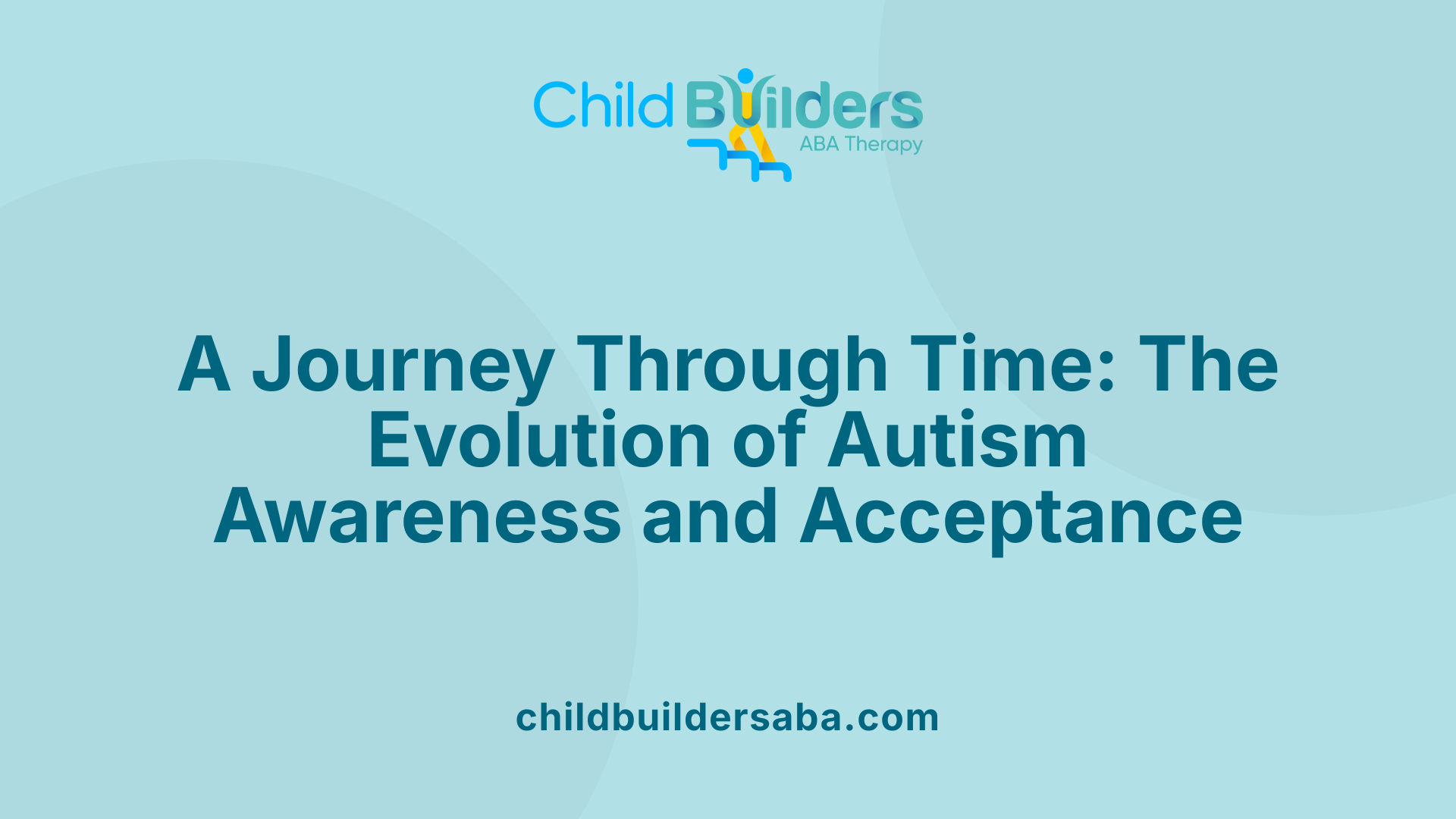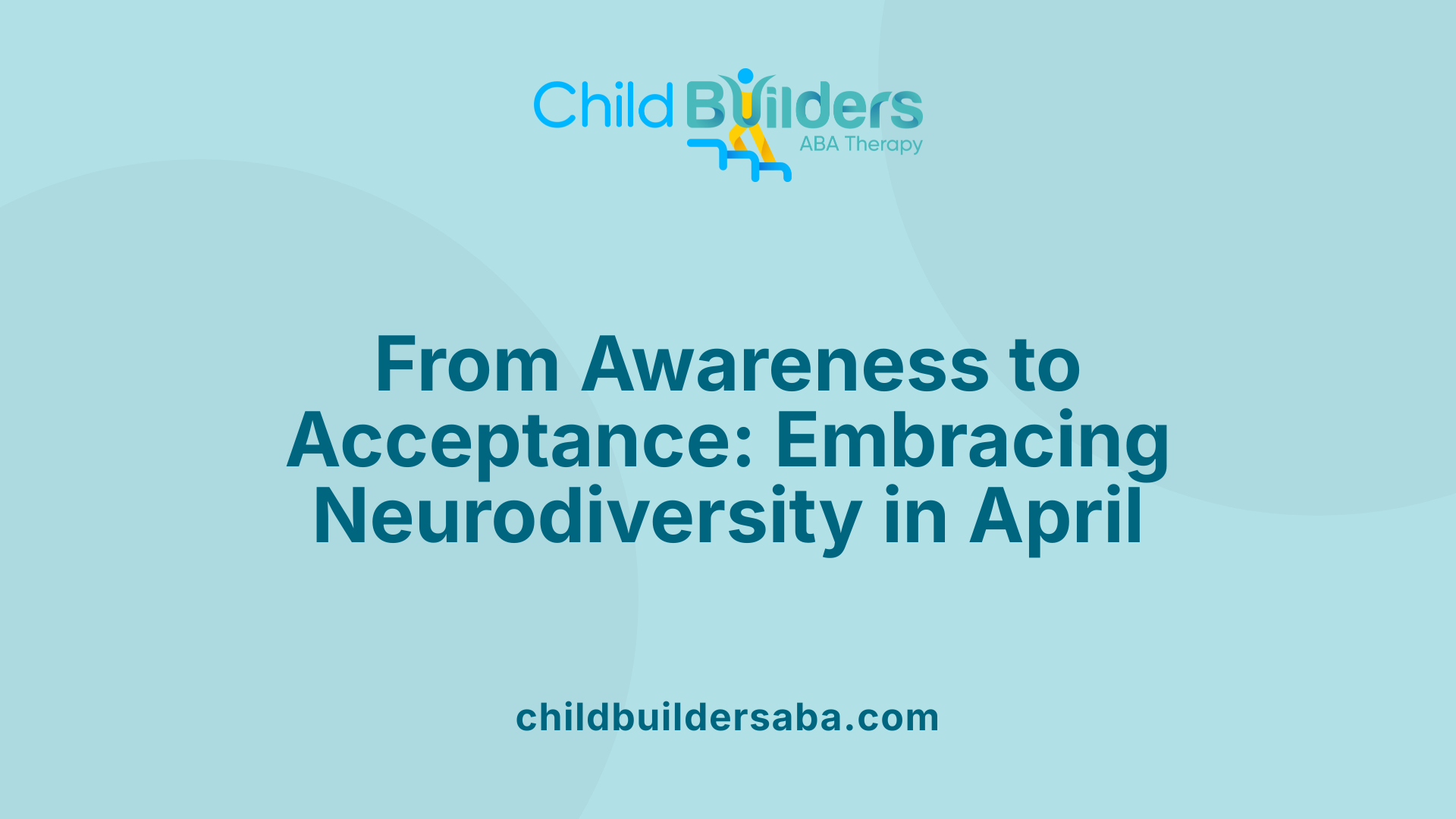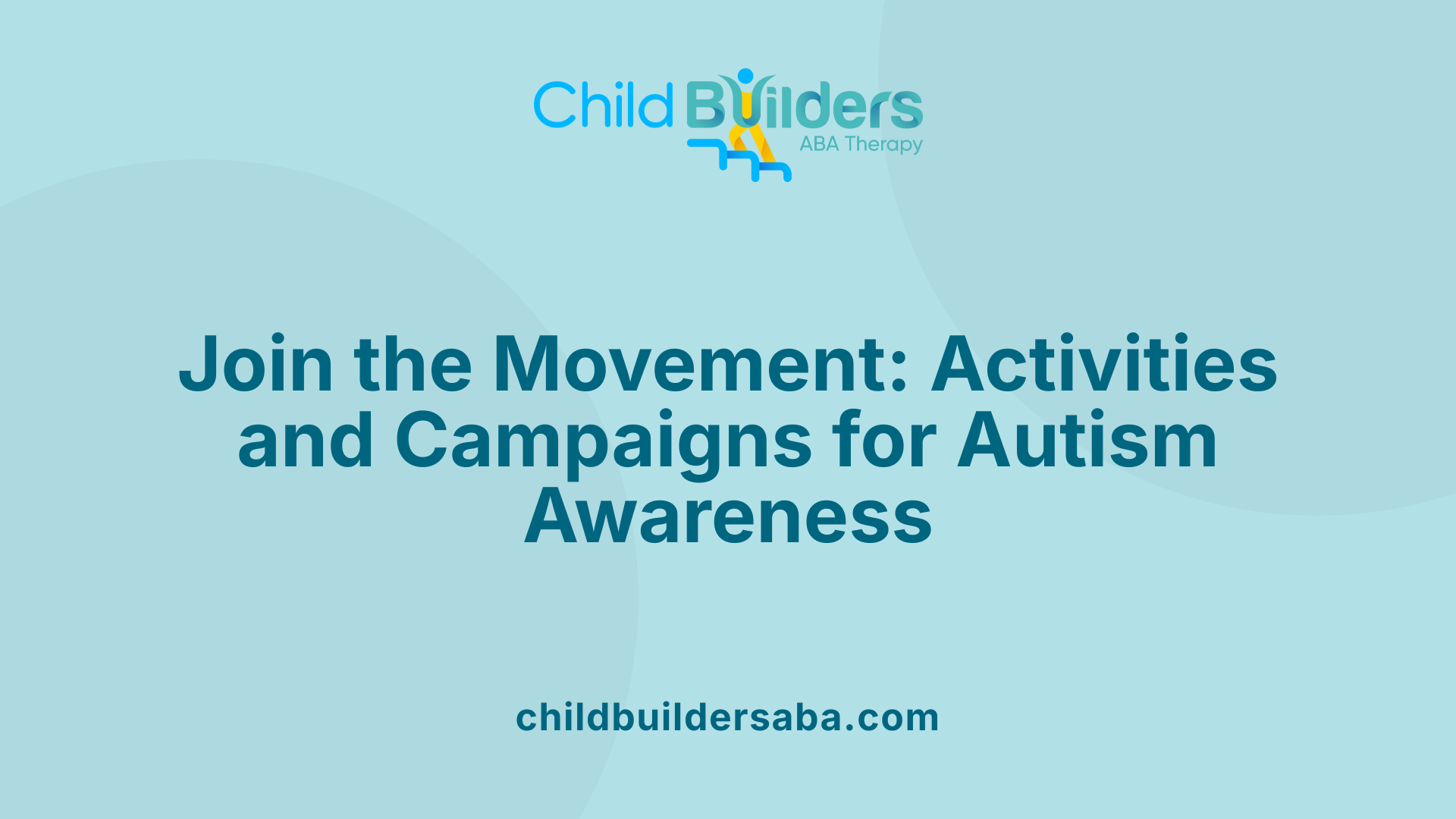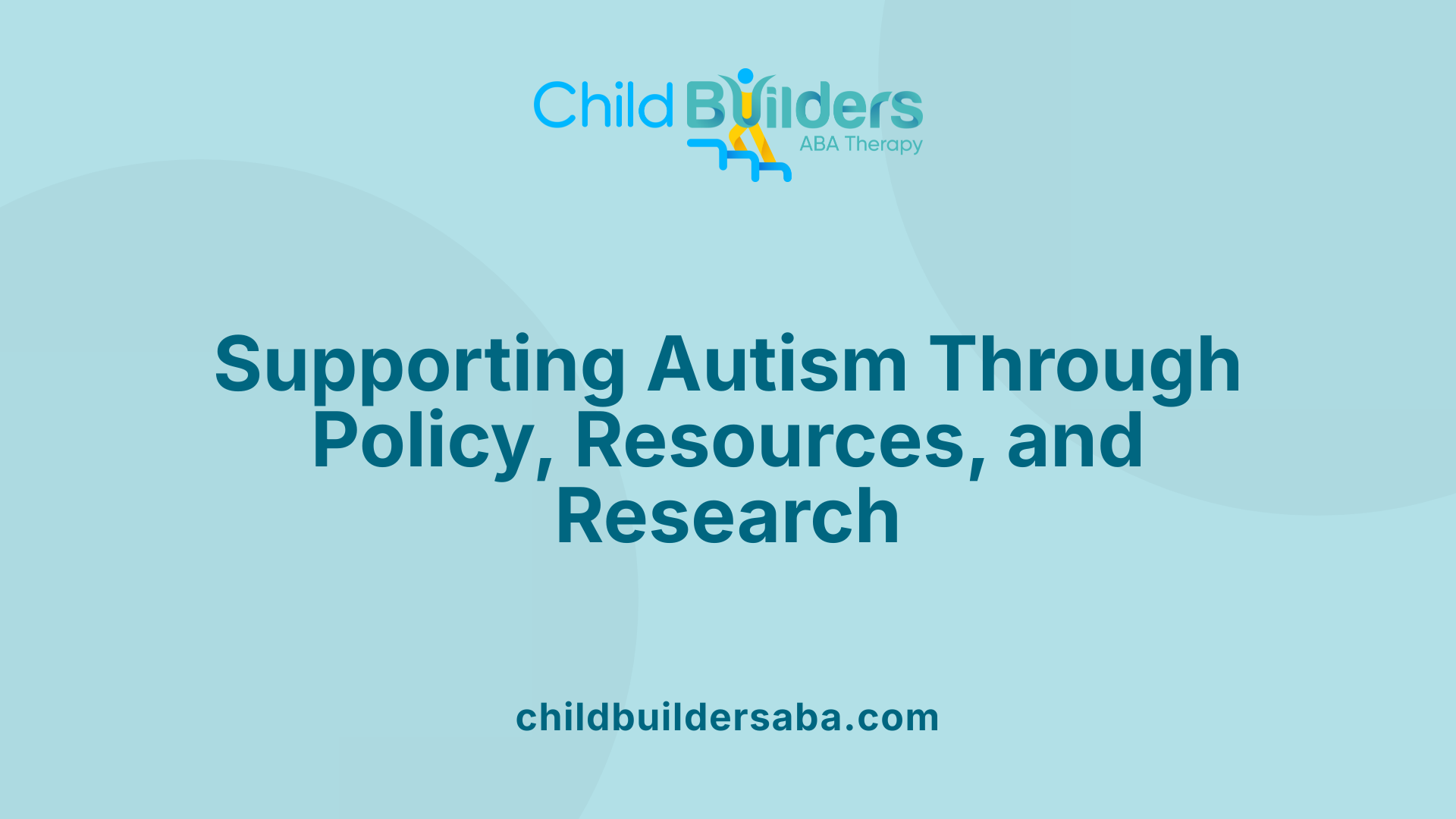Autism Awareness Month

Understanding Autism Awareness and Acceptance
April marks a pivotal month dedicated to recognizing and supporting individuals with autism spectrum disorder (ASD). Known as Autism Awareness Month and Autism Acceptance Month, this period is an opportunity for communities worldwide to educate, advocate, and foster genuine inclusion for autistic individuals. With a rich history rooted in advocacy, the observance has evolved from simply raising awareness to emphasizing acceptance, neurodiversity, and respect for each person’s unique experiences. This article explores the significance, history, and impactful ways to participate during this meaningful month.
History and Evolution of Autism Awareness and Acceptance Month

What is the history behind Autism Awareness and Acceptance Month?
Autism Awareness Month was first established in April 1970 by the Autism Society, a nonprofit organization founded by parents and advocates dedicated to promoting understanding and support for individuals with autism. Originally, the aim was to raise awareness about autism, its challenges, and the need for resources and research.
During the early years, campaigns like 'Light It Up Blue,' launched in 2004 by Autism Speaks, and the widely recognized Puzzle Piece symbol, introduced by the National Autistic Society in 1963, became visual representations of the movement. These campaigns helped spread awareness to a broader audience and foster community support.
Over the decades, the focus began to shift from primarily raising awareness to promoting acceptance and inclusion. This change was driven by the understanding that autism is a spectrum and that respect for neurodiversity is essential. As a result, the term transitioned from 'Autism Awareness Month' to 'Autism Acceptance Month' in 2011, with many organizations officially adopting this new focus by 2021.
The shift emphasizes understanding autism as a natural variation of human experience, advocating for equal opportunities and reducing stigma. During this time, efforts also expanded globally, with the United Nations declaring April 2nd as World Autism Awareness Day in 2008. This international recognition underscores the importance of global efforts to foster awareness, promote policies, and support individuals with autism across different societies.
Today, Autism Acceptance Month is a time for education, celebration of diverse experiences, and advocacy. It encourages actions such as community events, educational campaigns, and policy initiatives aimed at making society more inclusive and supportive of autistic individuals and their families.
The Purpose and Significance of Autism Awareness and Acceptance Month

What is the purpose of Autism Awareness Month and how does it differ from Autism Acceptance Month?
Autism Awareness Month, established in April, primarily aims to increase public understanding of autism spectrum disorder (ASD). It strives to raise visibility about autism's characteristics, the challenges faced by autistic individuals, and the importance of early diagnosis and intervention. Activities during this month often include campaigns like 'Light It Up Blue' and community events that share facts about autism, with the goal of educating the general public.
In contrast, Autism Acceptance Month, which gained prominence around 2011 and was officially adopted by organizations such as the Autism Society of America in 2020, emphasizes a shift from mere awareness to genuine inclusion and respect. It encourages the celebration of neurodiversity—the idea that variations in brain function are natural and valuable. Acceptance advocates for embracing autistic identities, challenging stereotypes, and advocating for policies that support accessibility and rights.
While awareness efforts tend to focus on understanding differences and pointing out challenges, acceptance efforts focus on viewing autistic individuals as whole persons with strengths, talents, and identities. This approach promotes reducing stigma, advocating for supportive resources, and fostering inclusive communities.
In essence, the movement from awareness to acceptance is about creating societal change: moving beyond just knowing about autism to actively valuing and including autistic people in all areas of life.
This transition encourages society to see neurodiversity as a natural human variation, which improves social integration, supports mental health, and enhances the quality of life for those on the spectrum.
Activities, Campaigns, and Ways to Support During April

What are some key activities or ways to participate during Autism Awareness Month?
Autism Awareness Month offers a variety of meaningful ways for individuals and communities to show support, promote understanding, and foster acceptance. A common and powerful activity is wearing the color blue, which has become a symbol of autism support and awareness. Many also display autism symbols like puzzle pieces, representing the complexity and interconnectedness of the autism spectrum.
Community events are central to the month's activities. Participants can join fundraising walks, attend awareness festivals, and engage in autism-friendly training sessions. These activities help raise crucial funds for autism services and spread awareness about autism spectrum disorder.
Educational efforts are equally important. Schools and workplaces often organize assemblies, educational presentations, and spirit weeks focused on autism acceptance. These events promote empathy, challenge stereotypes, and encourage inclusive behaviors.
Creating sensory-friendly spaces and distributing sensory toys are practical ways to support autistic individuals' needs. Such efforts help make environments more accessible and comfortable.
Messaging kindness and promoting anti-bullying campaigns foster a safer and more accepting community for autistic children and adults.
Sharing accurate, helpful information through social media platforms amplifies awareness efforts. Many organizations, including Autism Speaks and the Autism Society, encourage sharing stories, resources, and event details online.
Supporting autism organizations through donations, volunteering, or attending virtual and local events directly contributes to ongoing efforts to improve lives. This collective action helps promote understanding, acceptance, and inclusion across all areas of society.
Overall, participation during April can be as simple as sharing a post, as active as organizing a fundraiser, or as engaging as participating in community or school-led activities. Every effort contributes to creating a world that values neurodiversity and supports individuals with autism.
Symbols, Campaigns, and Supporting Materials

What is the significance of the blue color and the puzzle piece symbol?
The color blue is widely recognized as the symbol of autism awareness and support, representing calmness, acceptance, and understanding. It is used during campaigns and events to foster solidarity and show support for autistic individuals and their families. The puzzle piece symbol, introduced by the National Autistic Society in 1963, signifies the complexity and diversity of the autism spectrum. It emphasizes strength, hope, and unity, illustrating how all pieces fit together to form a complete picture of the autistic community.
Why is it important to celebrate Autism Awareness and Acceptance Month?
Celebrating Autism Awareness and Acceptance Month is crucial because it promotes understanding, inclusion, and respect for the diverse experiences of autistic individuals. It helps shift the focus from merely raising awareness to encouraging true acceptance, which involves creating supportive environments that respect individual needs. The month offers a platform for sharing personal stories, educating the public, and advocating for better health, educational, and employment support. Campaigns like "Light It Up Blue" and initiatives such as "Autism Is" urge communities to participate actively. These efforts help foster acceptance, reduce stigma, and ensure that neurodiverse individuals are valued and included in all areas of life.
Research, Legislation, and Support Resources for Families and Individuals with Autism

What is the significance of wearing blue during Autism Awareness Month?
Wearing blue during Autism Awareness Month has deep symbolic meaning in promoting understanding and acceptance of autism. The color blue is central to the 'Light It Up Blue' campaign launched by Autism Speaks in 2004. This initiative encourages individuals, organizations, and landmarks worldwide to illuminate in blue light on April 2nd, World Autism Awareness Day, to raise awareness about autism spectrum disorder (ASD).
Blue symbolizes calmness, trust, and serenity, qualities that foster a supportive environment for autistic individuals. The act of wearing blue helps to visually unite communities in solidarity, highlighting the importance of inclusion and acceptance. Additionally, the color blue has become a recognizable banner of autism awareness, complemented by symbols like the rainbow spectrum and the infinity sign, which emphasize neurodiversity and the wide range of autism experiences.
Overall, donning blue during this month encourages societal reflection on how to be more understanding, accommodating, and appreciative of the diverse talents and challenges faced by people on the autism spectrum. It is a simple yet powerful gesture that promotes a global movement towards acceptance and support.
Prevalence Data and Challenges
Recent estimates from the CDC indicate that approximately 1 in 36 children in the United States has autism spectrum disorder, an increase from previous years. Autism affects individuals across all racial, ethnic, and socioeconomic backgrounds, making it a widespread societal issue. The spectrum nature of autism means symptoms can vary widely, from communication difficulties to repetitive behaviors, with some individuals being nonverbal.
Challenges include early diagnosis, access to therapies, educational support, and societal understanding. Many autistic individuals face hurdles in social interaction, employment, and community participation, underscoring the need for inclusive policies and support systems.
Support Services, Educational Resources, and Advocacy Efforts
Numerous organizations actively work to provide support and raise awareness. Autism Speaks offers programs like Autism Friendly Training and advocates for policy changes, including contacting Congress to support autism initiatives like the Autism CARES Act.
The Autism Society of America promotes Autism Acceptance Month with awareness events, educational resources, and advocacy projects such as 'Road to Acceptance' that showcase diverse autism experiences. Educational activities include sharing social media messages, organizing community events, and providing resources that foster understanding.
Libraries and local institutions also host autism-friendly activities and resources, including sensory kits, books, and exhibits that promote inclusion. Schools and workplaces are encouraged to adopt inclusive practices that recognize the strengths and needs of autistic individuals.
Legal Acts and Policies Supporting Autism
Several legal frameworks underpin support for individuals with autism. These include:
| Legislation | Year | Purpose |
|---|---|---|
| Americans with Disabilities Act (ADA) | 1990 | Ensures equal opportunity and access in employment, public services, and accommodations |
| IDEA (Individuals with Disabilities Education Act) | 1990 | Guarantees free appropriate public education for children with disabilities |
| Children's Health Act | 2000 | Focuses on improving health care services for children with special needs |
| Autism CARES Act | 2014 & 2019 | Provides federal funding for autism research, screening, and services |
These laws aim to promote inclusion, ensure access to necessary services, and foster ongoing research to better understand and support those on the autism spectrum.
More Resources and How to Support
Support for autism families and individuals can be enhanced by participating in community events, supporting legislation, and making donations. Engaging in awareness campaigns by sharing educational content and stories helps reduce stigma. Policies like the Autism CARES Act and local supportive initiatives create systemic change, promoting a more inclusive society.
For those seeking additional information, searching for 'support resources and legislation for autism' can reveal local programs, advocacy groups, and legal rights that benefit the autism community. Continued education, advocacy, and community involvement are essential to foster understanding and ensure meaningful inclusion for everyone on the spectrum.
Moving Toward an Inclusive Future
As Autism Awareness Month and Autism Acceptance Month continue to foster understanding and support, it is crucial that communities transform awareness into tangible acceptance. By participating in activities, embracing symbols like blue and the puzzle piece, and advocating for policy change, society can uphold the rights and dignity of autistic individuals. Celebrating neurodiversity not only enriches our communities but also paves the way for a more inclusive world—one where every person’s strengths are recognized and valued.
References
- World Autism Month - Autism Speaks
- Autism Acceptance Month - Autism Society
- Autism Partner Toolkit | Autism Spectrum Disorder (ASD) - CDC
- Autism Acceptance Month: Celebrate Differences - The Arc
- World Autism Awareness Day
- Autism Acceptance Month: The History and Impact - Neurology Advisor
- 5 Facts About Autism Awareness Month - Utah Parent Center
- Autism Acceptance Month 2025 - Cerebral Palsy Guide
- April is Autism Awareness Month - URAC



.jpg)

































































































